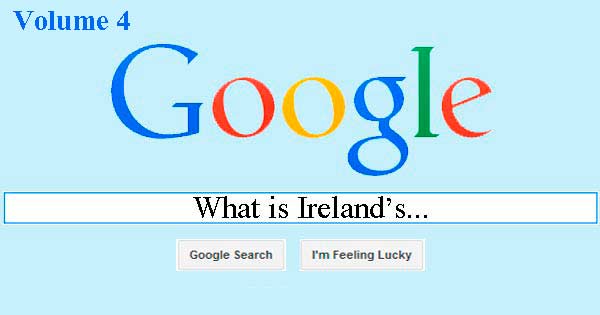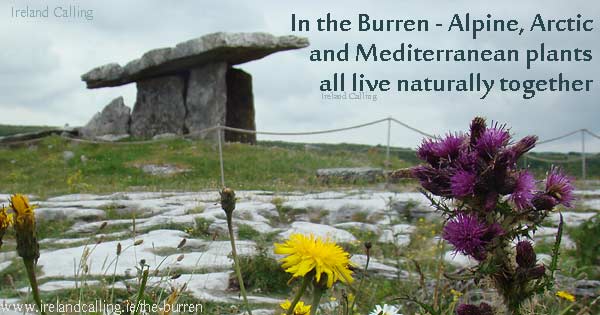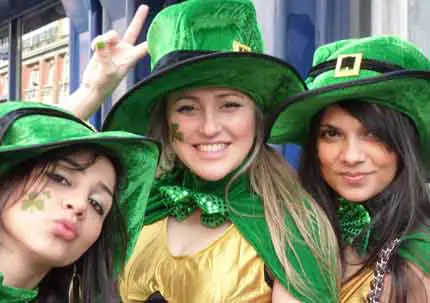What people around the world wanted to know about Ireland?
Here is a list of the most popular ‘What is Ireland’s..’ searches that are typed into Google. For those of you that don’t want to sit there searching each one, we have provided a brief answer to the questions of our own.
…currency?
The Republic of Ireland joined the Euro in 2002. Northern Ireland still uses pounds sterling as it is part of Britain. Some retailers near the border of the two countries will accept either currency.
…climate?
The climate in Ireland is generally considered to be a mild one, with no extreme temperatures in the summer or winter. This is because of its geographical position. Ireland is kept warmer than other islands at a similar latitude, because the North Atlantic current carries warm air and water towards it all year round. The Labrador Sea off the north-east of Canada and the Russian Sea of Okhotsk both commonly freeze during the winters. Despite being at a similar latitude, the waters around Ireland never do because of the heat coming from the Atlantic Ocean.

…national debt?
At the beginning of 2014, Ireland’s national debt stood at €202billion, which was 123% of Gross Domestic Product. The figure is ever-changing and is being significantly reduced due to the strict financial restrictions placed on Ireland by the European Union.
…government?
The government in Ireland is made up of members of the Oireachtas, the Irish parliament. A candidate must be elected into the Oireachtas, and then becomes known as a Teachta Dála (TD). The Oireachtas is split in two bodies, the Seanad Éireann and the Dáil Éireann, similar to the House of Commons and the House of Lords in British politics.
The different parties each chooses their leader, and the public vote who they want to elect as Taoiseach (Prime Minister). The Taoiseach then selects his government, which is made up of between seven and fifteen TDs, with no more than two coming from Seanad Éireann. The President of Ireland is also elected by the public. However, this role comes with limited power, and is more of a figure head type of position.
The current Taoiseach is Enda Kenny of the Fine Gael party. The President of Ireland is Michael Higgins.
…economy?
Ireland suffered an economic crisis during the late 2000s. A thriving housing market and the introduction of the Euro had created a false boom in the Irish economy. It collapsed in 2008 and the country entered into recession. It needed a €67billion bailout from the European Union, and had strict financial restrictions placed upon it. Ireland officially came out of recession in 2013 and is continuing to take tentative steps to recovery.
…culture?
Ireland is a multi-cultural country, accepting people from all over the world. Traditionally, it is thought of as a Gaelic country, with most of the population having had descended from the ancient Celts. However, in recent years several people from around the world have chosen to live in Ireland, either permanently or stopping off for a few months whilst travelling. The people of Ireland are world-renowned for their tolerant and welcoming nature and Ireland, and Dublin in particular, is one of the most cosmopolitan places in the world.

…national colour?
Most people naturally assume that Ireland’s national colour is green. In fact, Ireland doesn’t have an official national colour.
People can be forgiven for assuming it is green, because the colour has been associated with Ireland for centuries, dating back to the ancient Gaelic traditions. Green also became a colour of Irish patriotism, from the 16th century onwards, as several generations fought and died in the battle for independence from Britain. The national football team of both Ireland and Northern Ireland play in green, as does the rugby team which is made up of players from both the north and the south.
However, there was a time when blue was considered to be the national colour of Ireland. During the 16th century, King Henry VIII made Ireland a Kingdom and its coat of arms was a harp on a blue crest.
This flag didn’t remain in place long though, and green soon became more prominent as the adopted colour of Ireland.
…GDP?
GDP (Gross Domestic Product) is the total value of goods and services produced by a country in a year. In 2013, Ireland’s GDP was £217billion, contributing 0.35% to the world’s total economy. Some of the biggest exports from Ireland are machinery and computers, pharmaceuticals and chemicals, and livestock. Countries such as Germany, Belgium, America and the UK are amongst the biggest importers of Irish produce.
…flag?
The Irish flag is three vertical stripes of green, white and orange. It was created after a group of French women gave the flag to Francis Meagher, to show the France’s sympathy with the Irish people in the early 19th century.

He unveiled it to a crowd of Young Irelanders during a speech in 1848. The green is to represent the ancient Celtic people, the orange represents the Protestant settlers who were loyal to William of Orange, and the white symbolises the peace between them. Prior to the Irish tricolour, the flag most associated with Irish nationalism was a plain green one, with a yellow harp in the centre.
…Eurovision song 2014?
Ireland’s 2014 Eurovision entry was Heartbeat by Can-linn featuring Kasey Smith. Unfortunately, they failed to qualify for the final, after being eliminated at the second semi-final, finishing 12th out of 15 countries.
lists.html
